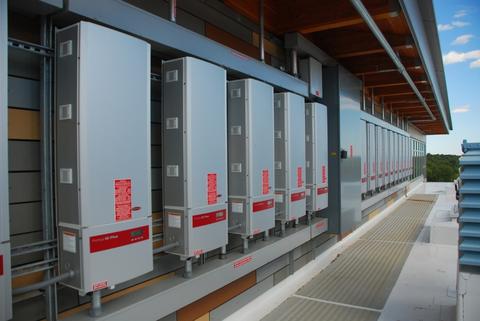Strengthening the Domestic Power Electronics Ecosystem

Goal: Develop in-depth understanding of manufacturing and innovation capabilities of the nation's fragmented and diverse power electronics industry, and produce consensus-based technology roadmaps to guide cooperative precompetitive research and workforce development efforts.
Background: Recent advances in power semiconductor technology have opened up new opportunities for innovation in power electronics. Market and regulatory conditions have created worldwide demand for power electronics systems that take advantage of new semiconductor technologies to enable higher efficiency devices that operate at higher temperatures, higher frequencies, and higher voltages, in smaller packages and at lower overall system cost.
Many nations are making investments to advance power electronics technologies and products that will have a lasting impact on a variety of markets and industries, including transportation, consumer electronics, energy storage, and renewable energy. The world market for inverters alone—just one element of power electronics—is projected to top $70 billion by 2020.
Approach: The Power Electronics Industry Collaborative is a national consortium of Original Equipment Manufacturers, suppliers, researchers, and other U.S. power electronics industry stakeholders. The group convened the industry to: assess and document the industry's current status and competitive position; analyze how technology and policy drivers could provide opportunity for the nation; and gain consensus on detailed technology, product and policy roadmaps to enable industry stakeholders to cooperate on pre-competitive research and achieve common market, policy, and workforce development goals.
Outcome: To better align the roadmap to the needs of U.S. industry, the consortium worked closely with PowerAmerica, a Manufacturing USA® institute focused on wide bandgap semiconductors.
The “Strengthening the Domestic Power Electronics Ecosystem Roadmap” was developed to address the technological and manufacturing challenges facing the U.S. power electronics industry.
The roadmap points out that the development of high-performance semiconductors is only one of the technical challenges facing the industry. Other challenges include the components that support the overall power electronics systems are being pushed to match the new semiconductor performance levels, which creates market conundrums that hamper growth of advanced semiconductors.
In addition, the roadmap analysis showed that the other nations are ahead of ours in developing the ecosystem necessary to support competitive design and manufacturing of power electronics for the global market.
Opportunities for improvement include supply chain gaps and fragmentation, lack of coordination in efforts to improve manufacturing capabilities, and workforce challenges. The roadmap addresses these challenges, with emphasis on understanding technology trends, including inter-dependencies in semiconductors, capacitors, magnetics, and packaging technology. A vibrant domestic power electronics ecosystem is key to competing effectively in the global marketplace.
Lead: Power Electronics Industry Collaborative
Funded Participants: NextEnergy Center (Detroit, Michigan)
Award Number: 70NANB14H041
Federal Funding: $500,000
Project Duration: 24 months
AMTech Project Manager: Thomas R. Lettieri
More information: https://peic-us.org/peic-offers-power-electronics-industry-roadmap/
Created May 6, 2014, Updated February 27, 2019

